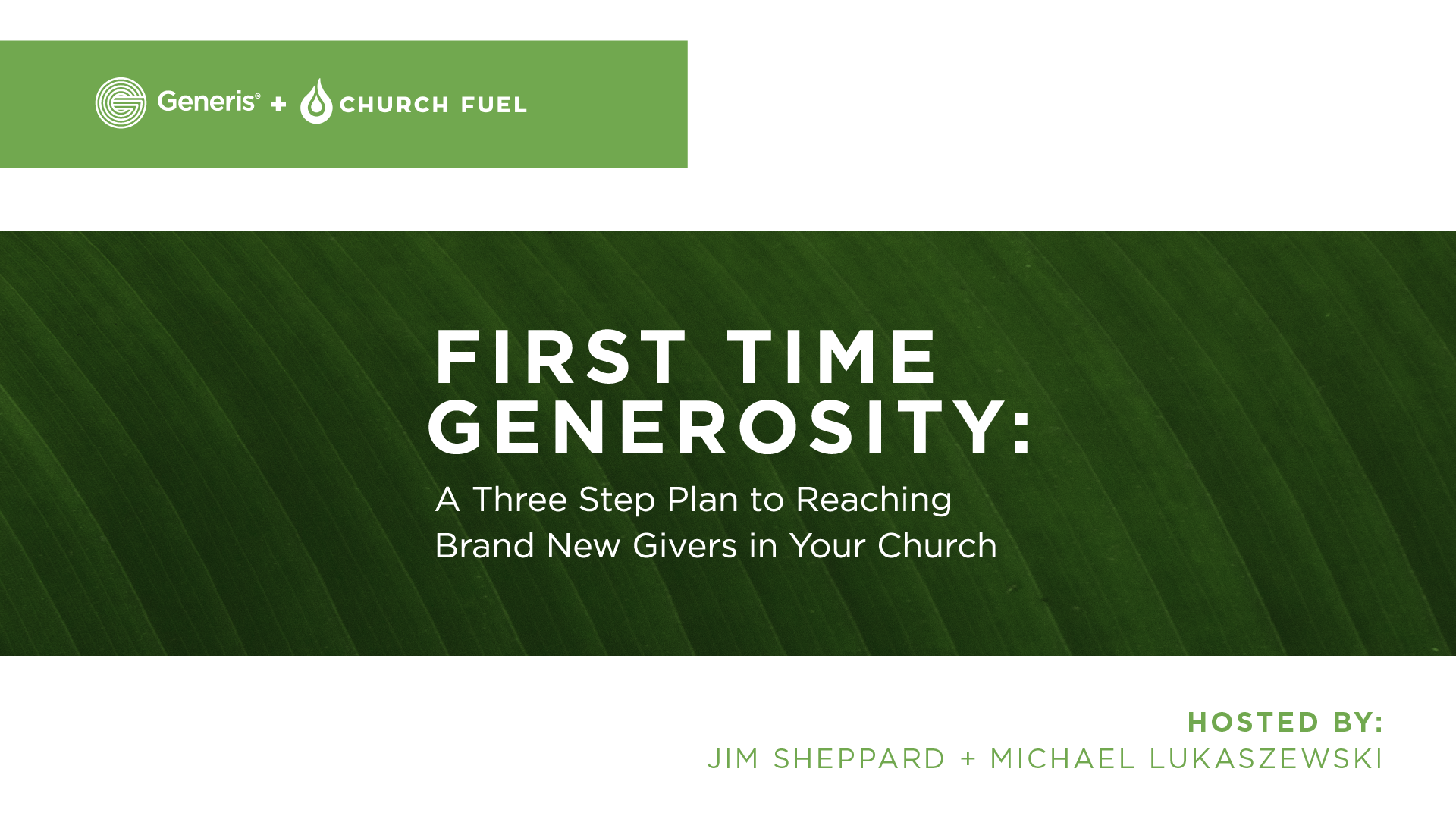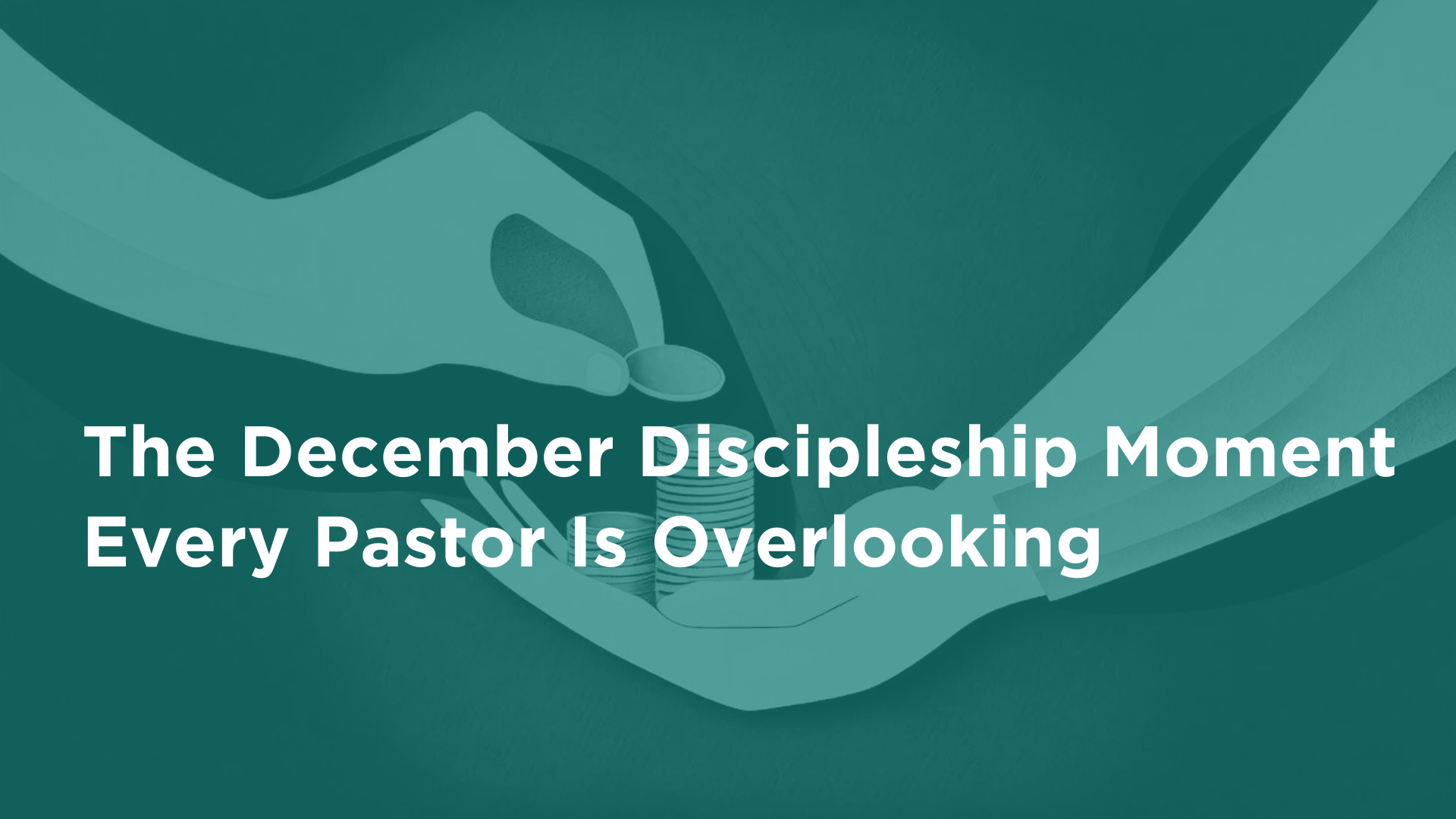If You're Worried About Engagement This Fall - Read This
Written by: Jim Sheppard, Generis Principal + CEO
It happened again.
Same conversation I’ve had dozens of times in the last three months.
A senior leader in a church said: “With everything that has happened since the COVID-19 outbreak, I don’t know who is with us. I don’t know if our people are coming back in the fall.”
I’ve heard this many times, and I always have the same thought, but I never say it.
Except this time, I blurted it out.
“Well, pastor, I’m not sure that started with the pandemic.”
Silence.
I was watching him on Zoom and waiting to see what he said. And then it came: “You know, I think you might be right. We probably haven’t known for quite some time.”
Whew…he got it. Not knowing who is “with you” at our churches has been an issue for some time. Now, it’s become more obvious because people have left the building for an extended period of time and are starting to find their way back.
Having people in our buildings only obscured the issue because we convinced ourselves, “If they are here, they are with us.” Some were with us. Some weren’t. And that difference in commitment has become much clearer now.
Here are four concerns we consistently hear from church leaders and some ideas on how you might address each one.
If your concern is:“Will my church come back in the fall? Who will be in the seats?”
You need to think of the rest of 2021 as a restart—almost like starting over for some churches. Focus on growing your church with people who have not been there before. How can you reach those people and impact them for Christ?
Think like a church startup. Start Acting Like A Church Plant. Do what successful church planters do in the early days to attract and engage people. Go back to basics.
- Create events that have a special reason to be at the church.
- Make sure you have radically good hospitality. Your weekend experience should leave people feeling like they can’t wait to come back.
- Be really good at marketing, especially in reaching the community near your church. Social media and a great website are fine and you should definitely have that. But the people in your community need to know who you are. Even if you are the obvious building on the very visible street corner. They know where you are but they don’t know who you are. Direct mail marketing is not dead, as long as you do it right. Get an expert to help you. For example, if you have a lot of young families in your community, send your mailers to, “The Children Residing at 123 Alpha Way.” Get the kids interested and the adults will follow.
If your concern is: “I don't know who is in my church anymore.”
You need to lean into your historically consistent congregants. You do know who is in your church, you just need to know where to look and engage.
The reality is, you probably know more about who is with you than you think. For the church leader who would say, “I don't know who is in my church anymore,” we would say you do know who is in your church, you just need to know where to look. It’s in your church management system.
Look for your consistent congregants—people who have been giving, serving and leading over the years—and lean into them. Many (not all) of the people you have lost are fair-weather attendees. Some may have left because of the way you have handled Covid, racial diversity, or election politics. That’s okay. Pruning is not a bad thing. Find those who have been engaged historically and lean into them.
Many of our people don’t know their way back to becoming engaged at church. They were very active up until March 2020 but they have become accustomed to worshiping online. Our people have developed a new habit over the last 17+ months.
And many of you have upped your game for your online services—you’ve put out a really good service every week. People have become very comfortable worshiping from home. Inadvertently, that contributes to the challenge of getting people back on your campus and actively involved. As obvious as it may be to us, they don’t remember the way back. We have to help them. Create a road map of sorts, and not by only using congregational announcements. Reach out to them one by one.
Make sure they know they are a valued part of the church and you miss them being present.
So, how do we find the people who were engaged with us before March 2020 but we haven’t seen in recent weekend services?
1. Start with your giving records.
Who are the faithful givers who have supported you through COVID-19? That’s a good starting place. Chances are, if you’re like many of the churches Generis serves, that list does not look a lot different than it did at the end of 2019. Oh, I know you’ve lost a few but most churches have not lost that many of their faithful givers. And it is not unusual that the faithful givers are 40%-50% of the people in the church. So, even pre-COVID-19, a lot of people who were showing up were not really engaged with their giving. Which, from my perspective, raises the question of whether they were really with you. The people who are giving $1,000 or more annually to your church are with you.
2.Another group of people that should be easy to identify is the volunteers who were serving on a regular basis pre-COVID-19. Weekend volunteers, children and youth ministry volunteers, small group leaders, other ministry leaders/volunteers. These people should be easy to identify in your church management system. If they were actively engaged in leading/serving/volunteering before March 2020, it would be fair to assume they were with you then, and likely to be with you again.
3. Identify other groups of people who were active prior to March 2020. Pull these lists and review them with your executive or core leadership team. Figure out who on the list has not been to an on-site worship service recently. Reach out to them. See how they are doing. Invite and encourage them to attend an in-person worship service. Getting people back for the first time is the main challenge. Chances are good if you can get them back one time, they will see how much they missed it and will begin attending in person again.
If your concern is:“Our small group culture has gone by the wayside after the pandemic started.”
You need to believe that now is the time to fortify your small group strategy and stop having a superficial relationship.
Go deeper, have intentional conversations, journey together as a church through a study. Create church-wide intentional moments of engagement.
Revisit the discipleship process for your church. One of the implications of people not returning to in-person worship services is that we have not discipled them well. Spend time critically reviewing your discipleship process. Maybe even have a third party come in and go over it with you. Commit to making the necessary changes.
We don’t mean to make this overly simplistic. It is, without question, a complex issue with multiple factors. But there are some things you can do now to find and re-engage the people who were with you pre-COVID-19. Address these three concerns and you will be on your way.
One final concern to take into consideration: Year-End Giving
You might be thinking , "I am so caught up in all of the things you’ve mentioned, I don’t know how I am going to focus on year-end giving, which I know is important to our church."
That’s actually good news because all of these things are connected to what could be your best year-end giving in quite a while.
Engaged people who are well discipled are, as a group, more committed to their church than people who are not engaged. Giving is a discipleship issue, not a financial issue. Maximizing discipleship in fall 2021 helps develop givers’ hearts, which is key to developing generosity. Accelerated ministry feeds accelerated giving because people love to give to a church that is winning for the Gospel in its community. Leveraging the beginning of the new ministry year to do that will feed the momentum of your ministry efforts which, in turn, will increase the likely effectiveness of your year-end giving efforts.
Today, this week, is not too early to think about year-end giving. Preparing well can significantly increase the potential of your efforts at the end of 2021.
Pastors, executive pastors and lead teams: Don’t lose sight of this opportunity.
It could be your best year-end ever!
Learn More & Get Started
Whatever your concerns are for fall 2021 - from engagement to ministry alignment to developing your best year-end giving strategy - the Generis team is here to partner with your church.
Schedule a complimentary strategy session today!
Creating a culture of generosity requires a commitment to discipleship, transformation, and mission advancement at all times. However, there are unique opportunities for more intentionality in the last 3 months of every year.
The team at Generis is working on a resource that will guide church leaders through the last quarter as they engage with their congregation, inspire generosity,
and look to 2022 with anticipation.
Share this
You May Also Like
These Related Stories

First Time Generosity: A Three Step Plan to Reaching Brand New Givers

The December Discipleship Moment Every Pastor Is Overlooking





No Comments Yet
Let us know what you think